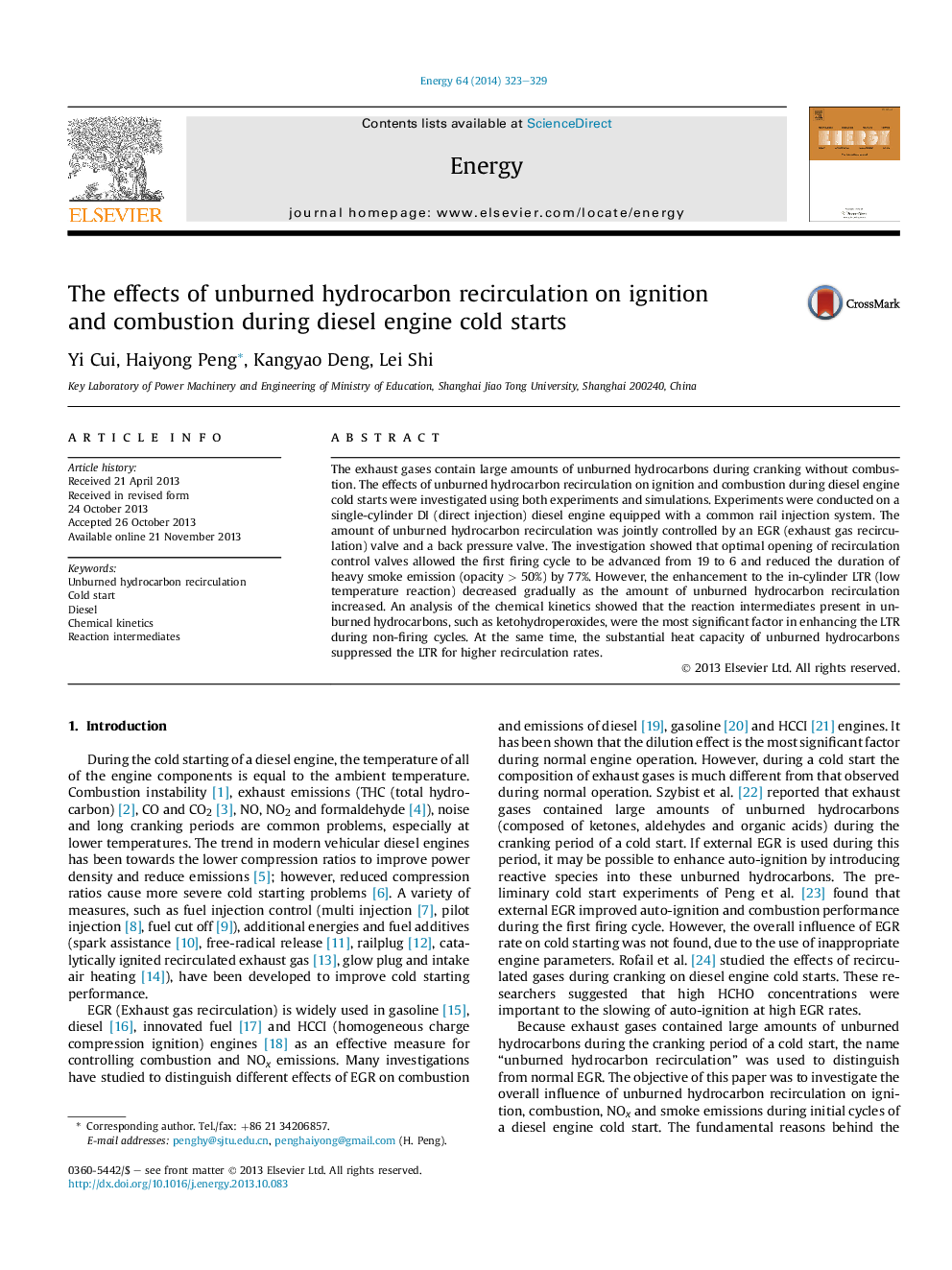| Article ID | Journal | Published Year | Pages | File Type |
|---|---|---|---|---|
| 8078693 | Energy | 2014 | 7 Pages |
Abstract
The exhaust gases contain large amounts of unburned hydrocarbons during cranking without combustion. The effects of unburned hydrocarbon recirculation on ignition and combustion during diesel engine cold starts were investigated using both experiments and simulations. Experiments were conducted on a single-cylinder DI (direct injection) diesel engine equipped with a common rail injection system. The amount of unburned hydrocarbon recirculation was jointly controlled by an EGR (exhaust gas recirculation) valve and a back pressure valve. The investigation showed that optimal opening of recirculation control valves allowed the first firing cycle to be advanced from 19 to 6 and reduced the duration of heavy smoke emission (opacity > 50%) by 77%. However, the enhancement to the in-cylinder LTR (low temperature reaction) decreased gradually as the amount of unburned hydrocarbon recirculation increased. An analysis of the chemical kinetics showed that the reaction intermediates present in unburned hydrocarbons, such as ketohydroperoxides, were the most significant factor in enhancing the LTR during non-firing cycles. At the same time, the substantial heat capacity of unburned hydrocarbons suppressed the LTR for higher recirculation rates.
Related Topics
Physical Sciences and Engineering
Energy
Energy (General)
Authors
Yi Cui, Haiyong Peng, Kangyao Deng, Lei Shi,
